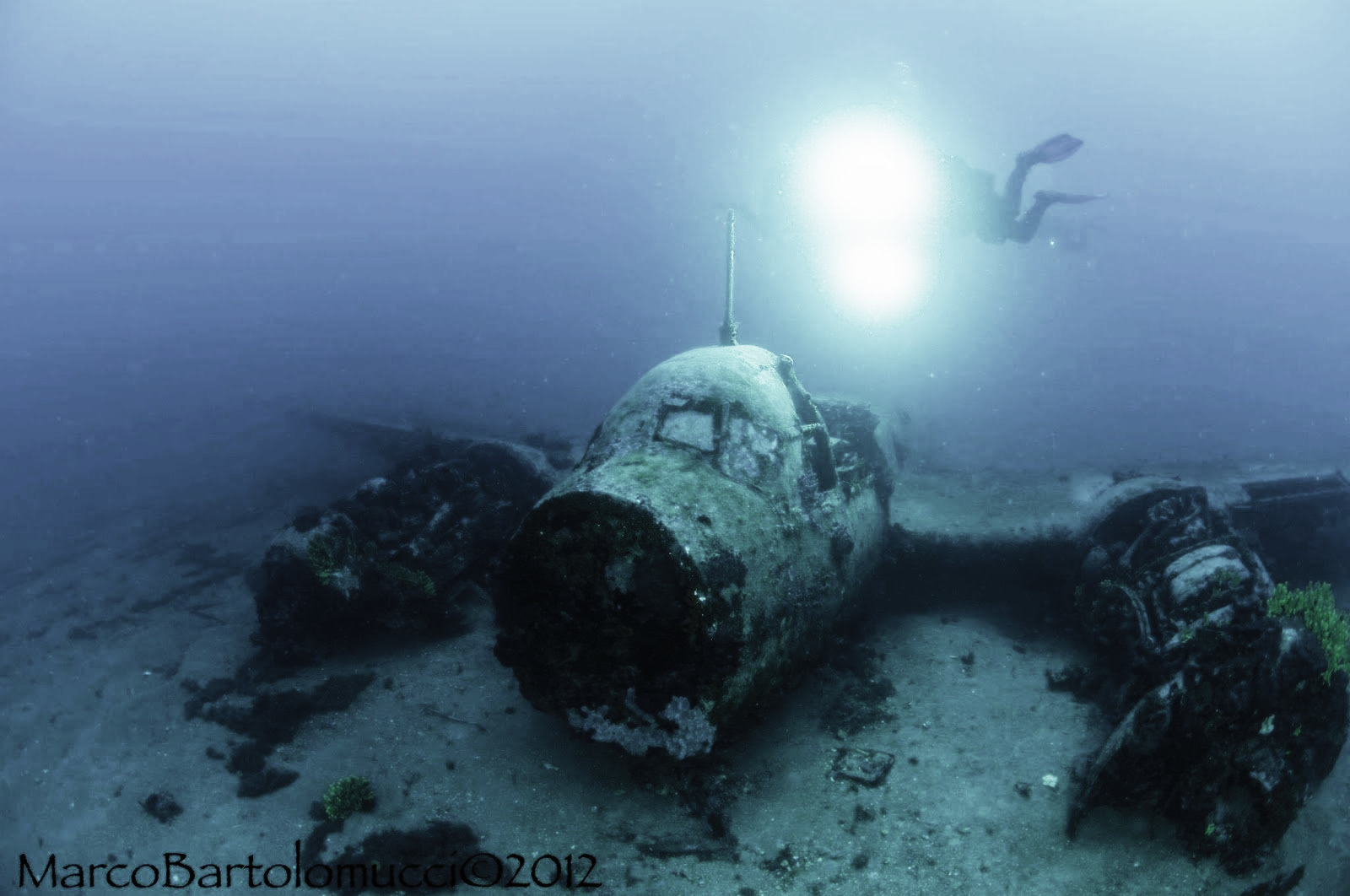

JUNKER 88 A "SCHNELL-BOMBER"-APULIA|HISTORIC WRECK
HISTORY. The Junker88 is located two miles off the coast of Santa Caterina di Nardò in Apulia in Southern Italy It was identified a few years ago by Andrea Costantini . There is little historical data on this airplane. It was identified as a twin-engine German Junkers88A bomber. It has a 20m long wingspan, with a length of 14,39 meters and a height of 4.85 meters. It was equipped with two Junkers Jumo 221 engines of 1350 hp each and reached a top speed of 470 km/h, the crew consisted of 4 members.
There are no known circumstances that forced the plane to ditch. Examining the wreck’s condition one can know that it was not damaged by enemy fire but most likely it was victim of a failure or perhaps ran out of fuel. The ditching was successful with the landing gear retracted before touching the water with the back of the fuselage. The airplane broke mainly in two parts: the tail, which is not far from the fuselage and the fuselage itself.
What really happened is still unknown, what is certain is that this type of aircrafts, were based in Apulia and precisely in the airports of Foggia and Grottaglie. From the chronicles we came to know that on May 14, 1943 a seaplane type Cant Z. the 288° squadron of Taranto recovered 4 castaways constituting the crew of a Ju.88 Luftwaffe, that was forced to ditch.
DIVING.
The Junkers 88 lays on a sandy bottom at a depth of 36 mt and as you go down the scene is impressive because it is very well preserved despite the long period it has been on the seabed. The wreck is stunning because it is in excellent condition and retains much of its components. Inside the cabin, which is entirely colonized by sponges and colorful marine life, you can see many tools. On the tail it is still possible to see the outlines of the Nazi swastika. The propellers made of wood are missing. The front which was made of plexiglass, the machine gun placed on the windshield and the entrances to the engines are missing. In conclusion the dive is recreational and not at all difficult. It is worth the long trip to see this spectacular wreck.” on the sandy bottom in Poseidon grass.
